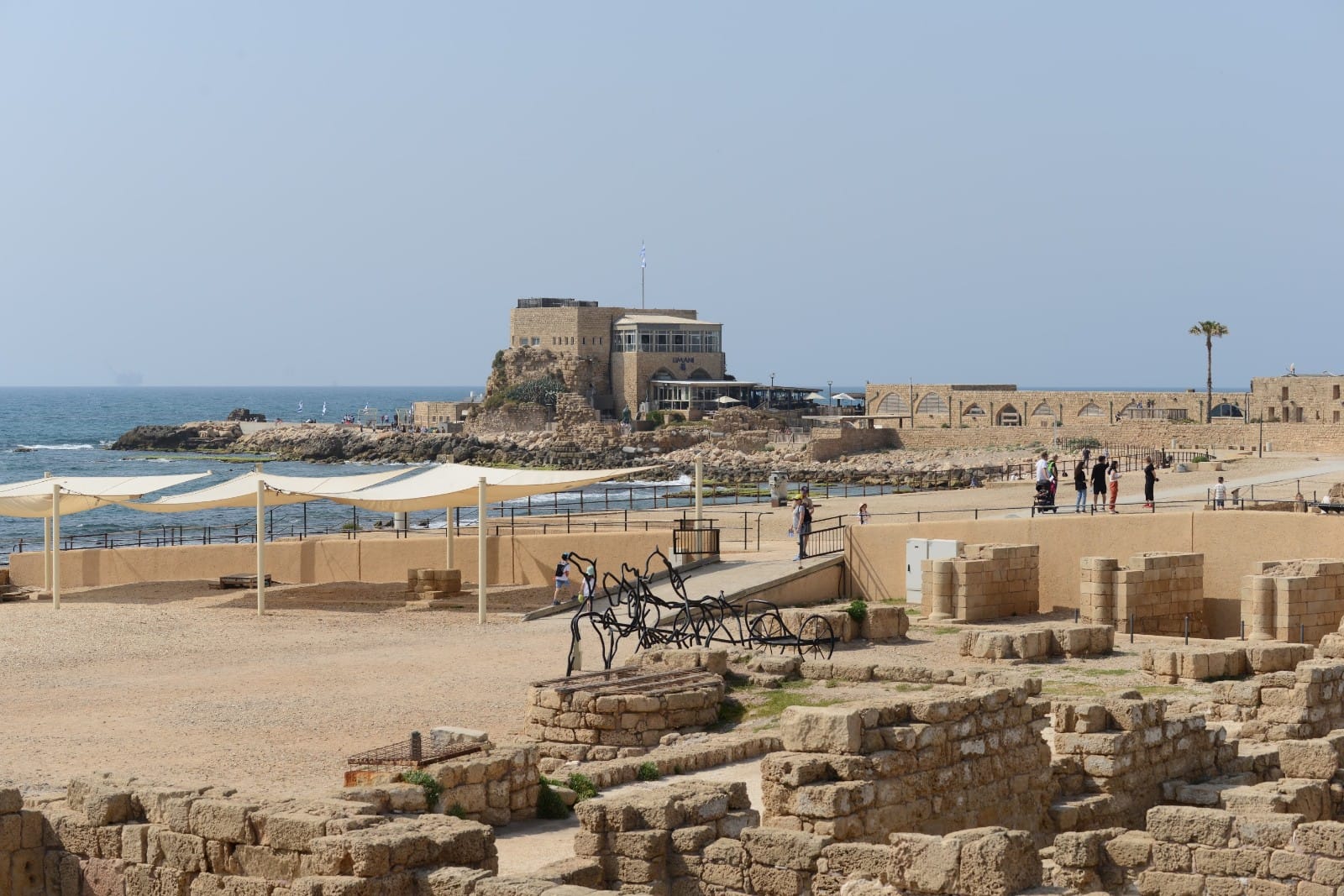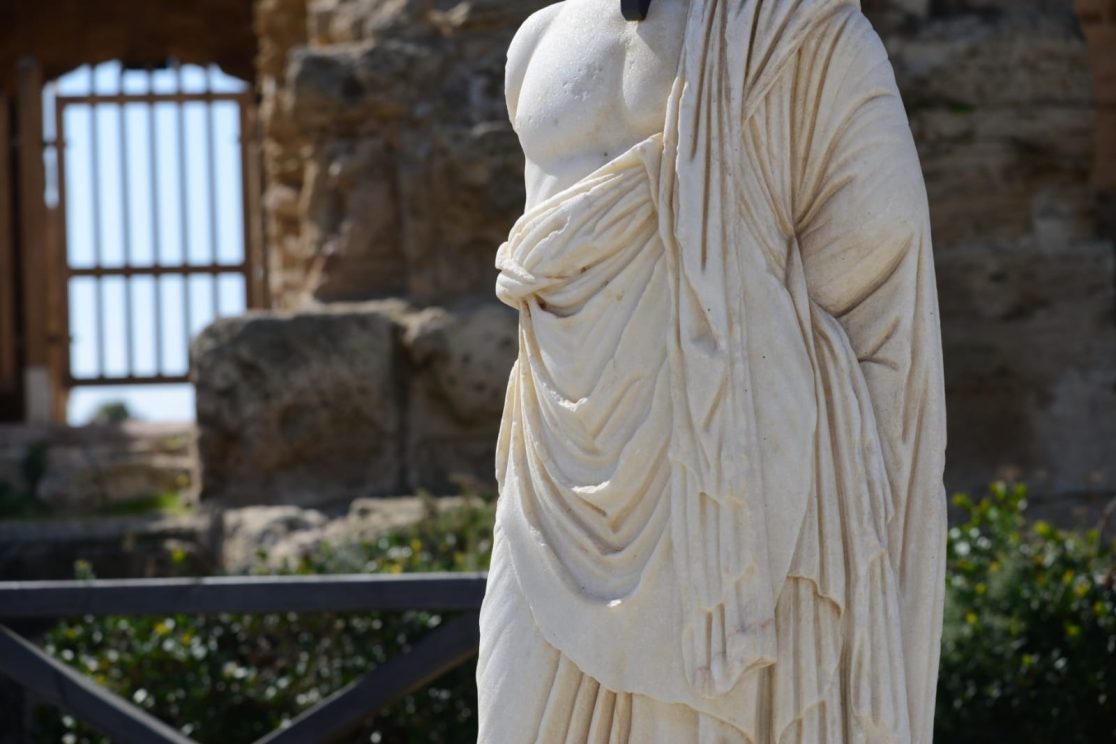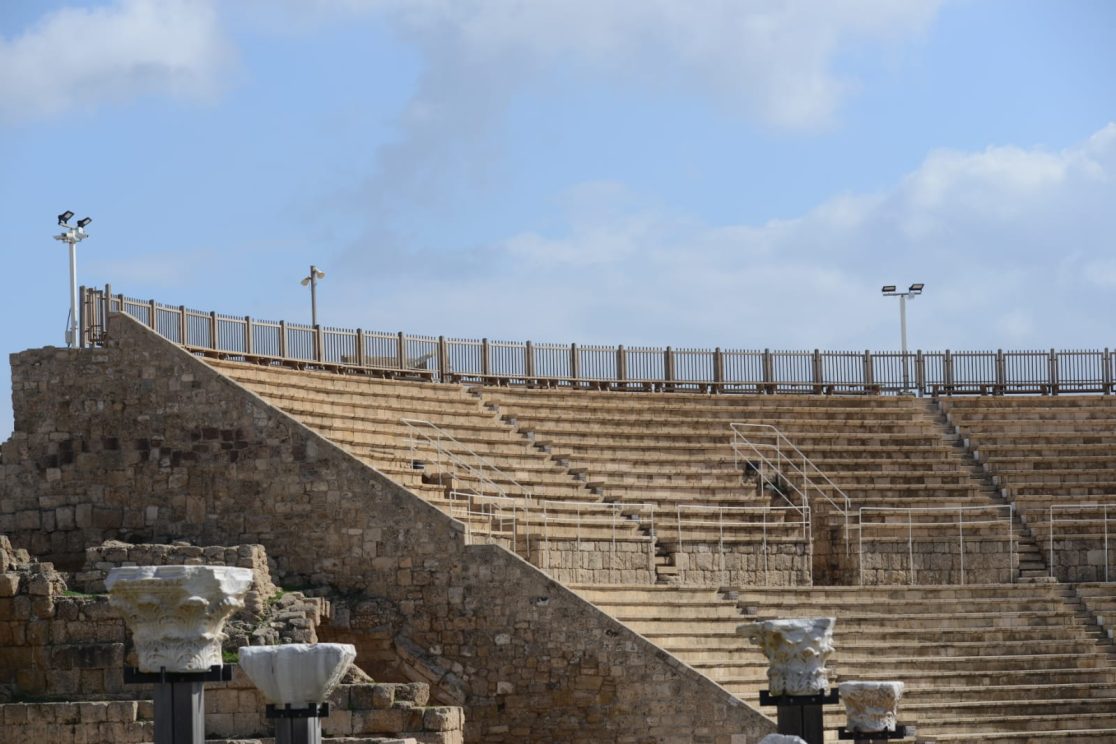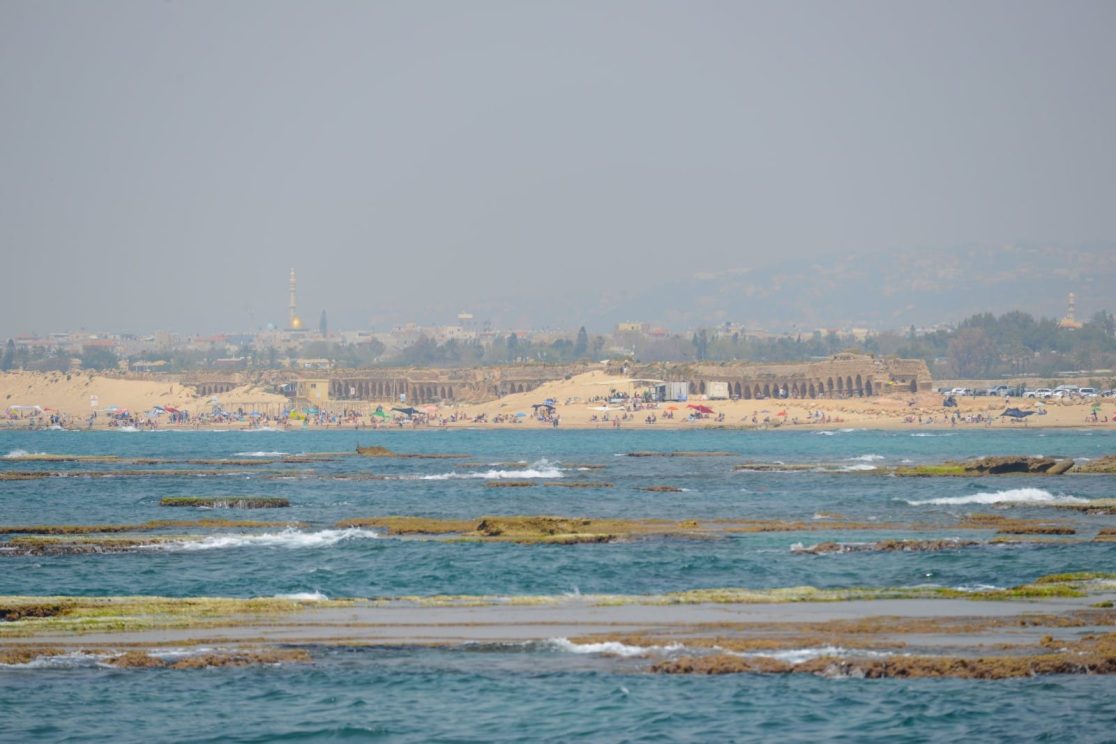Caesarea
Caesarea – Introduction
Caesarea is a gem on Israel’s north-central coast, about 55 km north of Tel Aviv, near Hadera. Named in honor of Roman Caesar Augustus, patron of King Herod the Great—the ultimate builder of Judea—this town blends ancient glory with modern luxury. Today, its residential side is all about high-end villas, private neighborhoods, and the rich & famous.
The real star, though, is ancient Caesarea—also called “Caesarea Maritima” (“Caesarea by the Sea”). This national park, recognized by Time Magazine in 2020 as one of the world’s top 52 must-visit places, is packed with history and sea views. For 39 shekels, your ticket gets you into the full complex: the old Roman theatre, the stunning horse-racing hippodrome, Herod’s seafront palace with its ancient “infinity pool,” and the new Visitors Center (opened in 2020) with a 15-minute film about Herod’s bold vision—subtitled in English, Russian, Spanish, and French. You’ll also find cafes, restaurants, galleries, and those iconic breaking waves.
Herod—brilliant, ambitious, and a complete paranoid—wasn’t exactly your warm and fuzzy king. His wife and two sons plotted to replace him, so he had them executed, prompting Caesar Augustus to famously quip, “It’s better to be Herod’s pig than his son.” But he also built wonders: the first artificial deep-water port in the world, Masada’s winter palace, the Herodian fortress, and the breathtaking expansion of Jerusalem’s Second Temple.
In its prime, Caesarea was Judea’s second-most important city after Jerusalem, with two-thirds of the population Roman and one-third Jewish. Life here looked a lot like Rome—think theatre shows, horse races, gladiator games, and lavish bathhouses. But cultural tensions simmered, and in 66 AD, the First Jewish Revolt against Rome sparked right here in Caesarea’s old synagogue.
Caesarea’s Role in Early Christianity
Caesarea played a big role in the early days of Christianity, serving as an important Roman administrative hub during the same period the gospels describe. Some archaeological finds here actually match and confirm events from the New Testament.
The Pontius Pilate Stone
Pontius Pilate, the Roman governor of Judea under Emperor Tiberius, is infamous for presiding over Jesus’ trial at the request of the Jewish Sanhedrin in Jerusalem, and ultimately ordering his crucifixion for declaring himself “King of the Jews.”
In the early 1970s, archaeologists digging in Caesarea’s theatre uncovered something remarkable—the Pontius Pilate Stone, an inscription bearing Pontius Pilate’s name exactly as mentioned in the Gospel of John. This single surviving inscription from Pontius Pilate’s time is a rare, tangible link to the man and, by extension, a powerful historical confirmation that Jesus was indeed a real historical figure.
Cornelius & Caesarea
Cornelius, a Roman centurion stationed in Caesarea, stands out in Christian tradition as the first Gentile to embrace the faith and leave paganism behind. According to the Acts of the Apostles, the Apostle Peter traveled from Jaffa after a powerful vision and baptized Cornelius in Caesarea’s waters. This moment became a milestone in early Christian history, with tradition claiming Cornelius later served as the first bishop of Caesarea.
Saint Paul & Caesarea
In the autumn of 57 AD, Saint Paul arrived in Caesarea (Acts 23:33–35) to stand before the Roman governor. Held under armed guard in the northeast chamber of Herod’s Palace, he faced charges of causing public disorder, being “a leader of the Nazarene group” (Acts 24:5), and allegedly desecrating the Temple by bringing Gentiles inside. Paul openly declared his belief in the resurrection of Jesus.
Governor Felix—who had earlier ordered the beheading of James, Jesus’ brother—planned to have Paul flogged and interrogated. But Paul stunned them with one question:
“Is it legal for you to flog a Roman citizen who hasn’t even been found guilty?”
At the start of the new millennium, an Israel Antiquities Authority excavation uncovered Herod’s palace and office complex, including a mosaic-inscribed room believed to be Paul’s holding cell. The Latin inscription read:
“I came to [this] office, I shall be watched [or guarded].”
Paul spent two years imprisoned here, actively debating with Felix and his Jewish wife, before Roman authorities finally sent him to Rome to stand trial before Emperor Claudius.
Caesarea & Herod the Great
King Herod built Caesarea Maritima between 25–13 BC as a grand port city of the Roman Empire. It quickly became the administrative center of Judaea, later serving as the capital of the Byzantine province of Palaestina Prima. After the Muslim conquest in the 7th century—when Caesarea was the last city to fall—it remained largely Arab until the Crusaders arrived in the late 11th century. The Crusaders built the massive fortress walls still visible today, stretching from northeast to southeast.
Caesarea’s true golden age was under Herod himself. Over 12 years, starting in 22 BC, he transformed the coastline by building the world’s first deep-sea harbor, complete with storerooms, bustling markets, wide paved streets, Roman baths and steam rooms, a public fountain, grand temples honoring Rome and Augustus, and impressive government buildings. To supply fresh water, Herod built a raised aqueduct from springs 16 km to the northeast—its remains still stand proudly along the beach north of the ancient city. After Emperor Hadrian’s visit in 130 AD, new sections were added and major repairs carried out to meet the city’s growing needs.
Every four years, Caesarea came alive with major sporting events: gladiator battles in the amphitheater at the hippodrome’s southern end, thrilling chariot races with two- or four-horse teams, and theatrical performances in a stunning 3,000-seat theatre overlooking the Mediterranean. That same theatre still stands today—and now hosts some of Israel’s most spectacular live concerts under the open sky.
In summary
A trip to Caesarea is always a treat. The site is beautifully reconstructed and preserved—thanks in large part to the Rothschild Foundation—and the whole tourist area has a relaxed, inviting vibe.
On our first visit, we grabbed a casual, reasonably priced meal at PortCafe. For our second trip, we splurged at Helena, named one of Israel’s top 101 restaurants by Timeout magazine in December 2019—and yes, it absolutely lived up to the hype. On our third visit, we aimed for the Greek-style bistro/taverna Limani.
Pro tip: arrive early in the morning. You’ll need a few hours to explore, and later in the day the crowds and traffic can pick up. If you really want to make it special, treat yourself to an overnight stay—either before or after your visit. The Dan Caesarea Resort offers a luxurious experience, while the Ramada Hadera Hotel (just a five-minute drive from Caesarea) delivers panoramic sea views and a massive breakfast spread. Our stay there was pure joy.



























